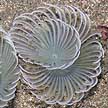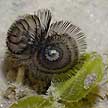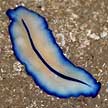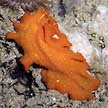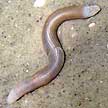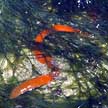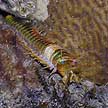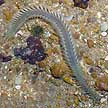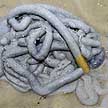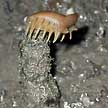 |
| worms text index | photo index |
| many different Phyla |
| Marine
worms updated Oct 2016
Almost everyone knows what a worm looks like. But the worms on our shores can look very different from the worms we are more familiar with. They are found in all kinds of marine habitats. What is a worm? An animal with a soft body that is much longer than it is wide is usually called a worm. Although they may appear similar, worms may belong to very different Phyla, often with quite different internal structures. Beautiful Worms: Some worms may appear totally unworm-like. Fan worms (Family Sabellidae, Phylum Annelida), for example, look more like flowery creatures. So do the small Phoronid worms (Phylum Phoronida) that often live with Peacock anemones. Others such as flatworms (Phylum Platyhelminthes) look like frilly, flat ovals and come in a delightful variety of colours and patterns. Even 'typical worms' can be appealing. Some bristleworms (Class Polychaeta, Phylum Annelida) are enchantingly iridescent and may come in shades of pink, red and green. They are sometimes seen under stones or moving about in the sand and mud. Living in a tube: Many worms make tubes to protect their soft bodies against predators and drying out. In undisturbed shores, tubeworms riddle the ground leaving only a tiny bit of their tubes sticking out to the surface. Keelworms (Phylum Annelida) build hard tubes out of calcium carbonate and are common under stones. Unseen worms: Some amazing worms are rarely seen although they are common. The strange Peanut worm (Phylum Sipuncula) is sometimes seen above ground. The Acorn worm (Phylum Hemichordata) is almost never seen outside its underground tunnel. But the grey coils of sediment (called the cast) that it leaves on the surface are often encountered on the sand bar. Some worms can be very long! These include the amazing Ribbon worms (Phylum Nemertea) that can be more than 1m long! The Giant reef worm (Eunice aphroditois) is also very long and scary-looking! But there are countless different types of microscopic worms. New ones are constantly being discovered. Not worms! There are also other creatures that look like worms but are not correctly called worms. These include: Synaptid sea cucumbers: These soft worm-like creatures are actually Echinoderms like sea stars! Nudibranchs and other slugs are snails without shells that belong to the Phylum Mollusca. While Vermetids look like worms that live in calcareous tubes, they are actually snails! Even some fishes like the Worm eel (Family Ophichthidae) is sometimes mistaken for a worm; while small flatfishes are sometimes mistaken for flatworms. Here's more about how to tell apart worm-like animals. |
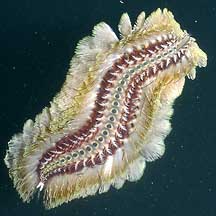 A beautiful bristleworm Raffles Marina, Apr 05 |
| Marine
worms on Singapore shores text index and photo index of marine worms on this site |
| Threatened
marine worms of Singapore from Davison, G.W. H. and P. K. L. Ng and Ho Hua Chew, 2008. The Singapore Red Data Book: Threatened plants and animals of Singapore. Phylum Platyhelminthes flatworms
Phylum Nemertea ribbon worms
Phylum Annelida, Class Polychaeta bristleworm
|
Links
References
|
|
|
